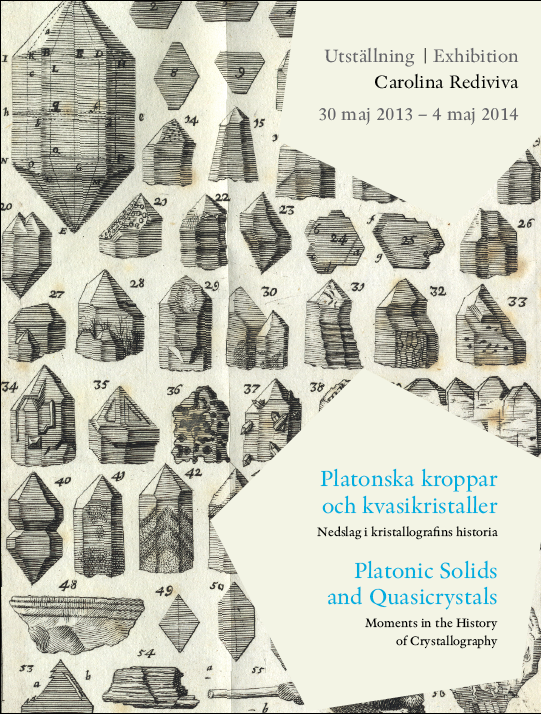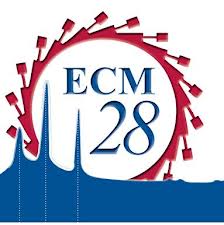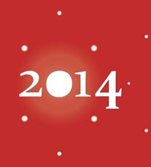August 2013
<< Previous Month Year view Next Month >>

| Event Name | Platonic Solids and Quasicrystals - Moments in the History of Crystallography |
| Start Date | 30th May 2013 |
| End Date | 4th May 2014 |
| Duration | 340 days |
| Description | This year's exhibition at Carolina Rediviva, Platonic Solids and Quasicrystals, is all about crystallography and shows how this science has been perceived over time. By collaborating with the Museum of Evolution at Uppsala University, we can exhibit books side by side with real crystals, models of crystals and instruments that have been used to measure the angles of these strange formations that seem to have been cut and polished by human hand whereas in fact they have been shaped by uniform atomic structures. Welcome on a beautiful journey through this collection of historical scientific books and artifacts. |
| Location | Uppsala Sweden |
| Contact | Johan Kjellman johan.kjellman@em.uu.se |
| URL | http://www.ub.uu.se/en/Just-now/Exhibitions/Current-exhibitions/ |
| Category | exhibitions |

| Event Name | 15th International Summer School on Crystal Growth |
| Start Date | 4th Aug 2013 |
| End Date | 10th Aug 2013 |
| Duration | 7 days |
| Description | The 15th International Summer School on Crystal Growth will be held August 4 -10, 2013 at the Gdansk University of Technology in Gdansk, Poland. Following tradition, the School will be organized during the week prior to the 17th International Conference on Crystal Growth in Warsaw, Poland. The objective of the School is to provide a comprehensive series of lectures on theoretical and experimental aspects of crystal growth and characterization of semiconducting, oxide, metallic, organic, and biological crystals. Lectures by leading researchers will encompass crystal growth processes, nanocrystallization, in-situ and exsitu characterization, properties, and applications. The level of the school is intended for post-graduate and post-doctoral students as well as for researchers from industry and academia who are interested in fundamental knowledge of crystal growth and epitaxy. Researchers new to crystal growth as well as experts are encouraged to attend. |
| Location | Gdańsk Poland |
| Contact | Ewa Talik isscg15@mif.pg.gda.pl |
| URL | http://science24.com/event/isscg15/ |
| Category | schools and workshops |

| Event Name | 17th International Conference on Crystal Growth and Epitaxy |
| Start Date | 11th Aug 2013 |
| End Date | 16th Aug 2013 |
| Duration | 6 days |
| Description | ICCGE-17 will provide a forum for the presentation and discussion of recent research and development activities in all aspects of bulk crystal growth and epitaxial thin film growth, with sessions including fundamentals, experimental and industrial growth processes, characterization and applications. The technical programme will include both oral and poster sessions, as well as plenary and invited talks to provide a complete picture of the latest developments in the field. |
| Location | Warsaw Poland |
| Contact | Stanislaw Krukowski stach@unipress.waw.pl |
| URL | http://science24.com/event/iccge17/ |
| Category | conferences |

| Event Name | II Curso de Análise de Minerais / Minérios pelas Técnicas de DRX e FRX |
| Start Date | 19th Aug 2013 |
| End Date | 23rd Aug 2013 |
| Duration | 5 days |
| Description | Instrutores: Profs. José Marcos Sasaki-UFC, José de Araújo Nogueira Neto-UFC e Fábio Furlan Ferreira-UFABC (convidado) Informações Gerais: Instrutores: Público Alvo: Carga horária: Inscrição: - Serão oferecidas somente 40 vagas Informações: Nota: O curso será cancelado e devolvida a taxa de inscrição no caso onde o número mínimo de participantes não atingir a 20 (vinte). Conteúdo geral do curso: Programação do Curso: 20/8/2013 – Terça-Feira 21/8/2013 – Quarta-Feira 22/8/2013 – Quinta-Feira 23/8/2013 – Sexta-Feira Material Didático:
|
| Location | Fortaleza Brazil |
| Contact | Jose Marcos Sasaki sasaki@fisica.ufc.br |
| URL | http://www.raiosx.ufc.br/site/?p=1223 |
| Category | schools and workshops |

| Event Name | The Two Braggs |
| Start Date | 25th Aug 2013 |
| End Date | 30th Aug 2013 |
| Duration | 6 days |
| Description |
The Two Braggs exhibition runs alongside ECM28 until the 29th, with a public Discovery Day on the 30th. The catalogue of the exhibition is available. |
| Location | University of Warwick |
| Contact | Stephen Soanes S.Soanes@warwick.ac.uk |
| URL | http://www.amg122.com/twobraggs/ |
| Category | exhibitions |

| Event Name | A Special Symposium at ECM28 to mark the Bragg Centenary |
| Start Date | 26th Aug 2013 |
| End Date | |
| Duration | N/A |
| Description |
The organisers are delighted to announce that ECM28 will host a special symposium organised by the Bragg Lecture Fund Committee to mark the Bragg Centenary, on 26 August 2013. Bragg Lectures are usually awarded by the committee every three years, but to mark this special anniversary, three lectures have been awarded for a symposium at the ECM 28 meeting in Warwick in 2013:
Prof John Jenkin, biographer of William and Lawrence Bragg, La Trobe University, Australia.
Dr Airlie McCoy, University of Cambridge.
Prof Bill David, ISIS Facility RAL & University of Oxford.
Chair: Prof Richard Catlow, FRS, University College London.
John Jenkin was born and raised in Adelaide, South Australia, is a graduate of the University of Adelaide and of the Australian National University, Canberra, and held postdoctoral appointments in the UK (AERE, Harwell) and the USA (Univ. of Minnesota). In 1968 he joined the Physics Department of La Trobe University, Melbourne, where he became a professor and head of department. He spent the last decade of his career in the history & philosophy of science program of the Faculty of Humanities at La Trobe. In physics his research included nuclear and condensed-matter physics, and in the humanities the historyof the physical sciences in Australia, with an emphasis on biography. Long retired, he is an Emeritus Scholar of La Trobe University. His major recent work is John Jenkin, William and Lawrence Bragg, Father and Son (Oxford: OUP, 2008hb, 2011pb).
Airlie McCoy first heard about crystallography in the Bragg lecture theatre as an undergraduate at the University of Adelaide, and was inspired to go on and complete a PhD in crystallography at the University of Melbourne. She is now based at the University of Cambridge. In addition to the study of structure and function of proteins, most recently in the area of protein transport between intracellular compartments, she has contributed to the development of software tools that protein crystallographers use for phasing X-ray data, including Phaser and the PHENIX suite. Airlie is committed to teaching crystallography, and has lectured and tutored at many crystallography schools.
Bill David is an STFC Senior Fellow at the ISIS Facility, Rutherford Appleton Laboratory. He is also a Fellow in Physics at St. Catherine’s College, Oxford and Visiting Professor in the Inorganic Chemistry Laboratory, Oxford where he has a research group that focuses on materials for energy storage. Bill’s supervisor “twice-removed” was W H Bragg – the lineage being Mike Glazer, Kathleen Lonsdale and then William Henry Bragg himself. A small amount of research has shown that this close link to one of the Braggs is not an uncommon occurrence among British crystallographers. Indeed, one hundred years on, the combined impact of both W H and W L Bragg on the world of crystallography and on British crystallography in particular is still strong.
|
| Location | University of Warwick United Kingdom |
| Contact | |
| URL | http://ecm28.ecanews.org/2013/02/a-special-symposium-at-ecm28-to-mark-the-bragg-centenary/ |
| Category | symposia |


